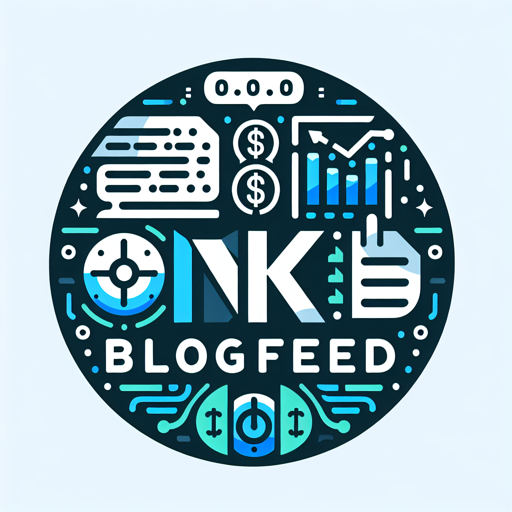How to Achieve a Successful Digital Detox: Tips and Strategies
In our modern digital world, the constant buzz of notifications and the allure of endless scrolling can easily consume our daily lives. The concept of a digital detox has emerged as a powerful tool to help individuals regain control over their technology use, enhance their productivity, and improve their overall wellbeing. By consciously disconnecting from electronic devices, we can create a more balanced relationship with technology and improve our mental and physical health.
What is a Digital Detox and Why is it Important?
Understanding the Concept of Digital Detox
A digital detox refers to a period during which individuals intentionally reduce or eliminate their use of digital devices such as smartphones, tablets, and computers. This detox isn’t about completely abandoning technology, but rather about taking a break from digital habits that may negatively impact our lives. By disconnecting from the digital world, people can focus on being present in their surroundings, reconnect with themselves, and nurture their social connections. It’s a way to reset one’s relationship with technology and foster digital wellness.
Benefits of a Successful Digital Detox
One of the key benefits of a successful digital detox is the improvement in mental and physical health. Reducing screen time helps improve sleep quality, reduce stress, and enhance focus and productivity. By unplugging from digital distractions, individuals can experience a heightened sense of alertness and mindfulness, allowing them to recharge and engage more deeply with the present moment. Furthermore, a digital detox can help in establishing healthier boundaries with technology, leading to a more balanced and fulfilling lifestyle.
The Impact of Screen Time on Wellbeing
Excessive screen time has been linked to various negative outcomes, including poor sleep quality, increased stress levels, and diminished productivity. Continuous exposure to digital devices can lead to digital fatigue, where individuals feel overwhelmed and disconnected from real-life experiences. By understanding the impact of screen time on wellbeing, individuals can make informed decisions to reduce their technology use and promote their digital well-being. Taking a break from screens allows for personal reflection and promotes healthier digital habits.
How Can You Plan a Successful Digital Detox?
Strategies for a Successful Digital Detox
Planning a successful digital detox requires thoughtful strategies and a commitment to change. Start by identifying the digital habits that you wish to modify, such as the constant urge to check notifications or excessive social media use. Set clear goals for your detox period, such as reducing smartphone usage during work hours or designating tech-free times in your day. By creating a structured plan, you can ensure a more effective and rewarding digital detox experience.
Setting Realistic Goals and Boundaries
Setting realistic goals and boundaries is crucial for a successful digital detox. Begin by assessing your current technology use and identifying areas that require change. Establish specific, achievable goals, such as limiting screen time to a certain number of hours per day or avoiding electronic devices an hour before bedtime. By creating boundaries, you can cultivate a healthier relationship with technology and prevent digital distractions from hindering your productivity and wellbeing.
Choosing the Right Time for Your Detox
Timing plays a significant role in the success of a digital detox. Choose a period where you can fully commit to reducing your screen time without the pressure of impending deadlines or work commitments. Weekends, holidays, or vacation times can be ideal for taking a digital detox, as they offer opportunities to engage in offline activities and strengthen social connections. By selecting the right time, you can maximize the benefits of your digital detox and create lasting positive changes in your life.
What Are the Best Strategies to Unplug from Digital Devices?
Mindfulness Practices to Reduce Screen Time
Incorporating mindfulness practices into your daily routine can significantly reduce screen time and enhance your digital detox experience. Mindfulness encourages individuals to be fully present and aware of their actions, helping them resist the temptation to mindlessly scroll through digital devices. Techniques such as meditation, deep breathing exercises, and mindful walking can help individuals stay grounded and focused, reducing the reliance on technology for entertainment or distraction.
Creating Tech-Free Zones at Home
Establishing tech-free zones in your home is an effective strategy to promote a successful digital detox. Designate specific areas where digital devices are off-limits, such as the dining room or bedroom, to encourage more meaningful interactions and improve sleep quality. These tech-free zones foster a sense of calm and provide a break from the constant presence of screens, allowing for relaxation and rejuvenation. By creating these sanctuaries, you can enhance your digital well-being and reduce the impact of technology on your daily life.
Using Apps to Monitor and Limit Social Media Use
Ironically, digital tools can be instrumental in achieving a successful digital detox. Various apps are available that monitor and limit social media use, helping individuals become more aware of their digital habits. These apps track screen time, provide usage reports, and offer features to block certain applications during designated periods. By leveraging technology in this way, individuals can gain more control over their digital consumption and work towards a more balanced relationship with their devices.
How Does a Digital Detox Improve Productivity and Wellbeing?
Enhancing Mental Health and Wellbeing through Unplugging
A digital detox can have profound effects on mental health and overall wellbeing. By unplugging from digital devices, individuals can reduce stress, improve sleep quality, and foster a greater sense of mental clarity. The absence of constant notifications and digital distractions allows for deeper relaxation and introspection, contributing to enhanced emotional resilience and mental stability. A successful digital detox provides the opportunity to recharge both the mind and body, leading to improved health and wellbeing.
Boosting Productivity by Reducing Digital Distractions
Digital distractions are a major hindrance to productivity in the modern world. By taking a break from digital devices, individuals can minimize interruptions and focus on important tasks more effectively. A digital detox allows for uninterrupted work periods, leading to increased efficiency and better time management. By reducing the constant pull of technology, individuals can channel their energy into productive endeavors, ultimately achieving more in less time and enhancing their professional and personal lives.
Recharging Your Mind and Body Away from Screens
Taking a break from screens can be incredibly rejuvenating for both the mind and body. A digital detox offers the chance to engage in physical activities, explore nature, and connect with loved ones, all of which contribute to improved physical health and social wellbeing. By stepping away from digital devices, individuals can recharge their energy, enhance their mood, and cultivate a greater appreciation for the world beyond screens. This holistic approach to wellbeing ensures a more balanced and fulfilling lifestyle.
What Challenges Might You Face During a Digital Detox?
Dealing with Withdrawal Symptoms from Social Media
During a digital detox, individuals may experience withdrawal symptoms from social media, such as anxiety or a fear of missing out. These feelings are normal and often temporary, as the mind adjusts to a new routine without constant digital engagement. By acknowledging these symptoms and employing strategies like mindfulness and deep breathing, individuals can navigate these challenges and remain committed to their detox goals. Over time, the reduced reliance on social media fosters a healthier mental state and improved wellbeing.
Overcoming the Urge to Check Notifications
The urge to check notifications can be one of the most challenging aspects of a digital detox. To overcome this, individuals should start by turning off non-essential notifications and creating specific times to check their devices. Engaging in offline activities and hobbies can also help distract from the compulsion to constantly reach for digital devices. By gradually reducing the frequency of checking notifications, individuals can break free from the cycle of digital dependency and regain control over their time and attention.
Maintaining a Balanced Approach Post-Detox
After completing a digital detox, maintaining a balanced approach to technology use is crucial for long-term success. Reflect on the insights gained during the detox period and consider implementing permanent changes to digital habits. Establish ongoing boundaries, such as regular tech-free periods or designated device-free days, to ensure that the benefits of the detox are sustained. By integrating these practices into everyday life, individuals can foster a healthier relationship with technology and enjoy lasting improvements in productivity and wellbeing.

